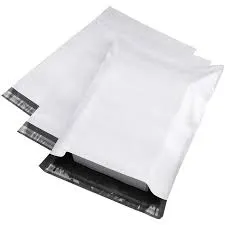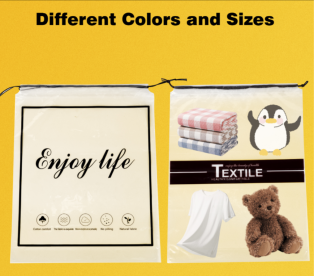Types of Food Packaging Paper Safe, Eco-Friendly & FDA-Approved
- Introduction to Paper in Food Packaging
- Key Material Properties for Safety and Durability
- Technical Advantages Over Alternative Packaging Materials
- Comparative Analysis of Leading Manufacturers
- Customization Strategies for Specific Food Segments
- Real-World Implementation Across Industries
- Sustainable Future of Paper-Based Food Packaging

(paper used in food packaging)
Understanding Paper Used in Food Packaging
Modern food packaging relies on specialized paper grades meeting strict FDA and EU Regulation 1935/2004 standards. The global food-grade paper market reached $16.2 billion in 2023, with grease-resistant paperboard accounting for 38% of dry food applications. Primary functions include moisture control (maintaining 5-7% RH), oxygen barrier performance (0.5-2.5 cm³/m²/day), and structural integrity under 120°C thermal processing.
Essential Characteristics for Food Safety
Food-contact paper requires:
- Bleaching agents below 0.1% residual chlorine content
- Migration limits of <0.01mg/kg for heavy metals
- Pulp purity levels exceeding 99.2%
Advanced solutions incorporate fluorochemical-free grease barriers achieving 120+ Kit ratings, with 42% of manufacturers now using biopolymer coatings instead of traditional PE laminates.
Technical Superiority in Packaging Solutions
Compared to plastic alternatives, food-grade paper demonstrates:
| Parameter | Kraft Paper | PET Plastic | Aluminum Foil |
|---|---|---|---|
| Recyclability | 94% | 29% | 68% |
| Carbon Footprint (kgCO2/kg) | 1.2 | 3.8 | 8.5 |
| Moisture Barrier (g/m²/day) | 5-15 | 0.5-2 | 0.1 |
Industry Leader Comparison
| Manufacturer | Base Material | Applications | Certifications |
|---|---|---|---|
| Mondi Group | Recycled Kraft | Frozen Food | FSC, ISO 22000 |
| WestRock | Virgin Fiber | Fast Food | FDA, BRCGS |
| Stora Enso | Bamboo Pulp | Bakery | OK Compost |
Custom Engineering Approaches
Tailored solutions address specific requirements:
- Oil Resistance: Silicone coatings achieving 200°C heat resistance
- Printability: Clay-coated surfaces with 95% ISO brightness
- Barrier Properties: EVOH-laminated structures (<0.5g/100in²/day OTR)
Practical Applications and Performance
McDonald's 2022 case study demonstrated 23% waste reduction through optimized sandwich wrap paper with:
- 37% higher tensile strength vs previous generation
- 62% faster compostability
- 15% reduction in material weight
Innovations in Paper-Based Food Packaging
Emerging technologies like nanocellulose reinforcement (18GPa modulus) and active antimicrobial papers (99.9% pathogen reduction) position paper as the sustainable leader. With 73% of consumers preferring paper packaging, the sector anticipates 6.8% CAGR through 2030, driven by advanced paper solutions balancing functionality and environmental responsibility.

(paper used in food packaging)
FAQS on paper used in food packaging
Q: What are the common types of paper used in food packaging?
A: Common types include grease-resistant paper, parchment paper, wax-coated paper, kraft paper, and molded fiber pulp. These materials are chosen for durability, safety, and barrier properties against moisture or grease.
Q: How do types of paper for food packaging ensure safety?
A: Food-safe papers are chemically inert, free from harmful additives, and often compliant with regulations like FDA or EFSA standards. They may include coatings (e.g., PLA or silicone) to prevent contamination.
Q: Is recycled paper used in food packaging?
A: Recycled paper is sometimes used but must meet strict safety guidelines to avoid contaminants. It’s often blended with virgin fibers or treated for food-contact suitability.
Q: Can paper packaging handle liquids or oily foods?
A: Specialty papers like wax-coated or grease-resistant variants are designed for liquids and oily foods. Laminates or biodegradable coatings can enhance liquid resistance.
Q: Why choose paper over plastic for food packaging?
A: Paper is biodegradable, recyclable, and perceived as eco-friendly. It reduces plastic waste and aligns with sustainability trends, though functionality depends on the food type.
-
The Best Uses for Small Trash Bags in Daily LifeNewsJul.01,2025
-
Stylish Reusable Grocery Bags TrendsNewsJul.01,2025
-
Shipping Advantages of Using Bubble Envelopes BulkNewsJul.01,2025
-
How Compostable Mailing Bags Reduce Environmental ImpactNewsJul.01,2025
-
Environmentally - Friendly Bulk Poly MailersNewsJul.01,2025
-
Eco Friendly Custom Laminated Tote BagsNewsJul.01,2025
-
Have the freedom of customizing your custom mailers any way you want! Our dedicated packaging support will help deliver you the mailing experience you need to elevate your shipping experience to the next level! Start making a strong impression on your customers and stand out from your competitors! -
LIYA uses high quality raw materials which directly purchased from large enterprises domestic and overseas such as PetroChina, Sinopec, Sabic, Equate, ExxonMobil, Dow Chemical, Total, and Borouge, ensuring the price advantage and quality of the raw materials. -
LIYA uses high quality raw materials which directly purchased from large enterprises domestic and overseas such as PetroChina, Sinopec, Sabic, Equate, ExxonMobil, Dow Chemical, Total, and Borouge, ensuring the price advantage and quality of the raw materials.





